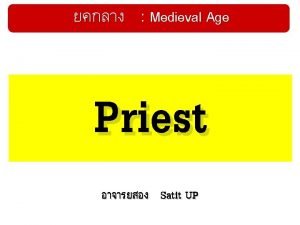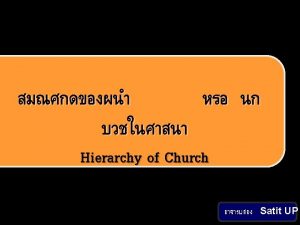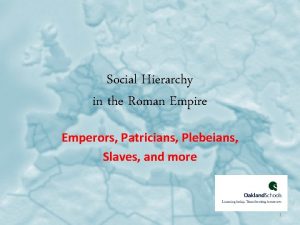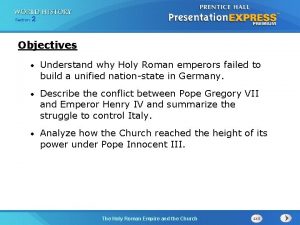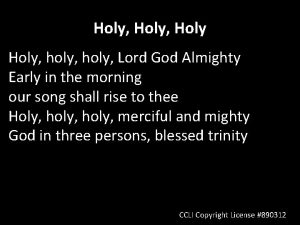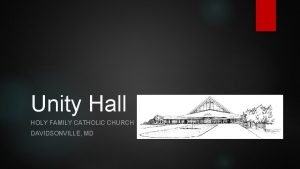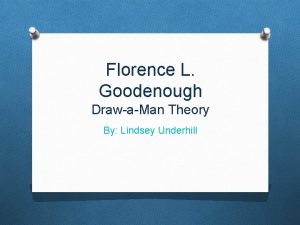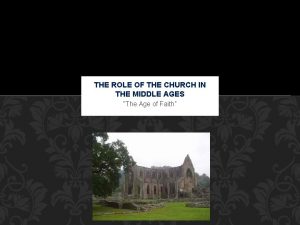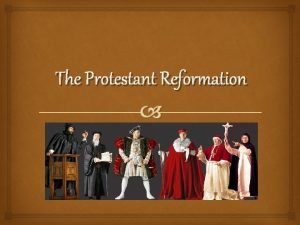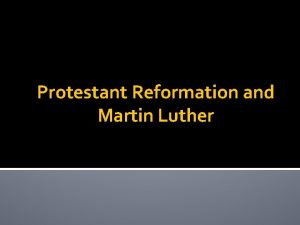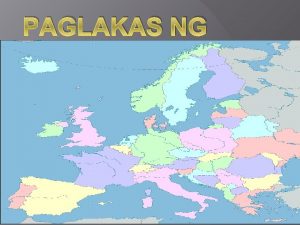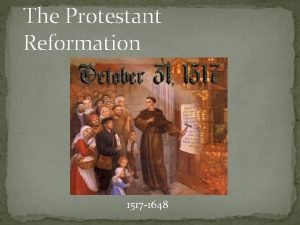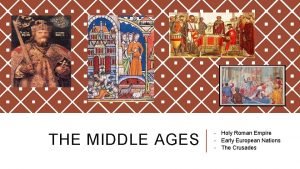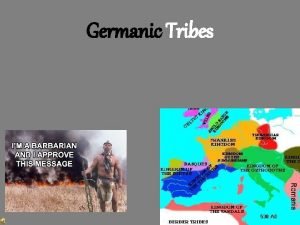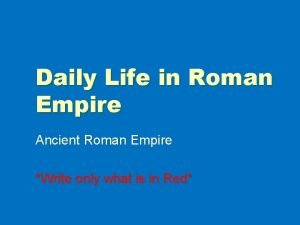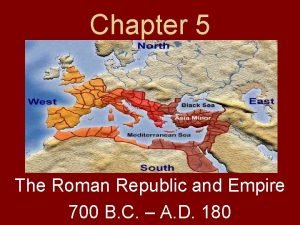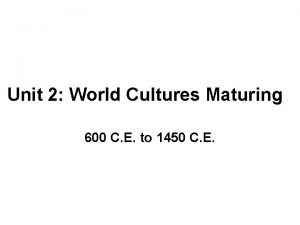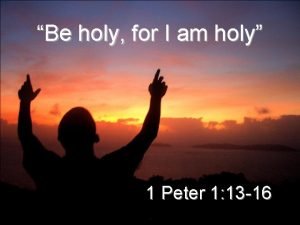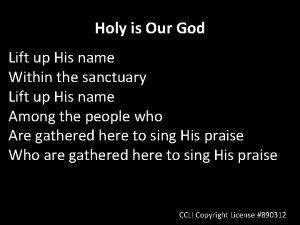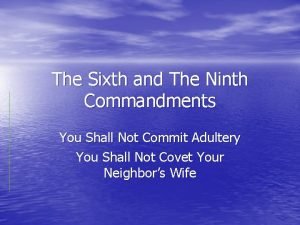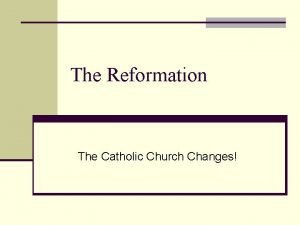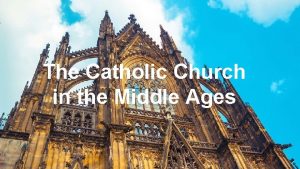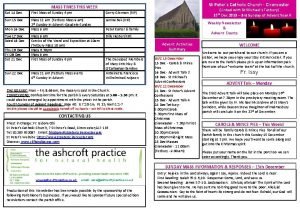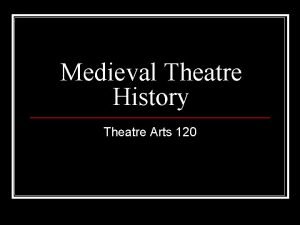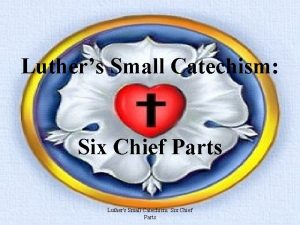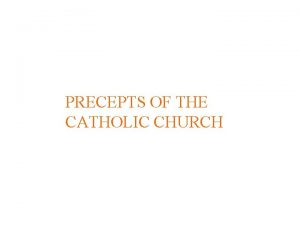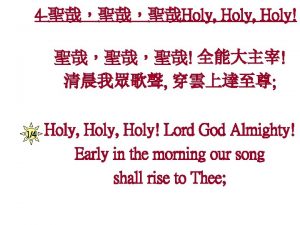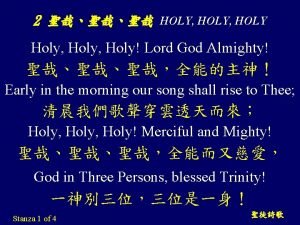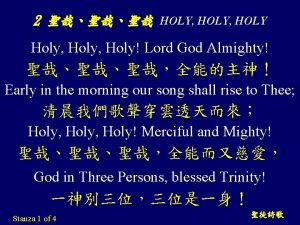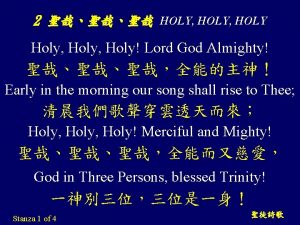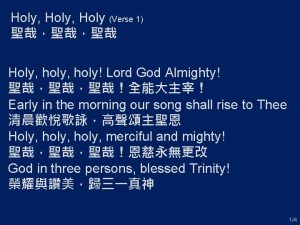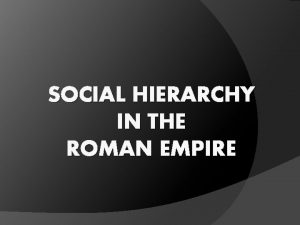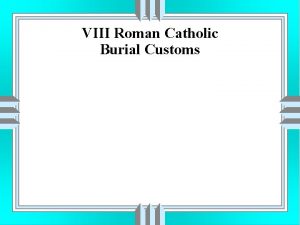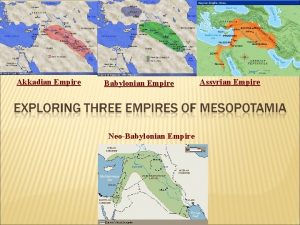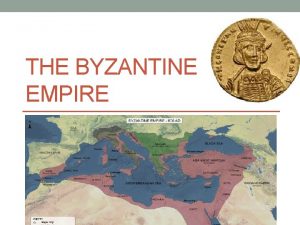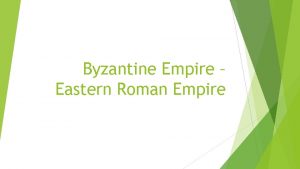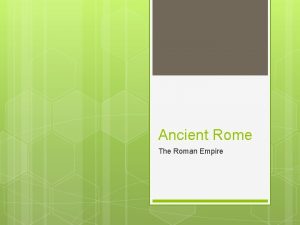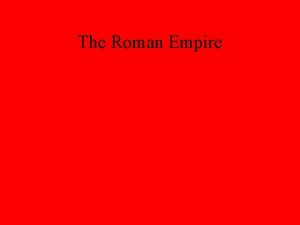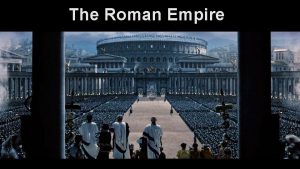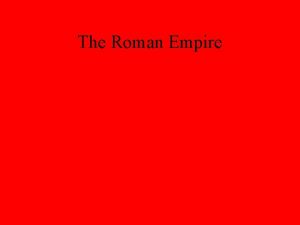I Holy Roman Empire A Catholic Church Hierarchy







































- Slides: 39

I. Holy Roman Empire

A. Catholic Church Hierarchy 1. Pope in Rome head of the church -Cardinals reported to Pope -Archbishops governed bishops spread all over Europe -Priests lived in villages and towns

2. “wandering” ministries: two orders of monks (Franciscans, Franciscans known for vows of poverty, & Dominicans, Dominicans more scholarly) 3. monasteries: housed monks who devoted their lives to study, worship, & hard work convents: for nuns 4. Monasteries became centers of scholarship, education, & libraries

Cluny

B. Politics & the Church 1. Church reform: some viewed Church as becoming corrupt (landholding, simony, & religious appointments) 2. Pope Gregory VII tried to take power from monarchs to appoint bishops (LAY INVESTITURE) 3. Church made its own courts: Ecclesiastical Courts 4. Concordat of Worms (1122): stated that bishops controlled by both Church (“ring & staff”) & by Emperor (“lance”)


C. “Angleland” 1. Battle of Hastings (1066): William “the Conqueror” invades the Saxons from Normandy 2. Henry II: - tried to strengthen power of king - created trial by juries - had archbishop of Canterbury (Thomas Becket) killed…

Thesis Writing Exercise: What factors contributed to conflict between the Papacy & the monarchs of Western Europe?

C. Early Russia 1. Missionaries brought Christianity to early Russia (Cyril & Methodius) - Cyrillic alphabet translated Bible into native Slavic languages 2. Trade brought Byzantine ideas

CYRIL & METHODIUS

THE CYRLLIC ALPHABET

D. KIEVAN RUS’ 1. Descendants of Vikings invade Baltic region and city of Kiev 2. Kiev major trade route

3. Vladimir converted the Rus’ to Christianity (fewest restrictions on food & drinking…) 4. Married Byzantine Emperor’s daughter 5. Copied Byzantium (religion, art, gov’t) VLADIMIR





boyars: boyars landholding aristocrats

YAROSLAV THE WISE 1. Yaroslav “the Wise” codified Russian law

E. KIEVAN DECLINE 1. CONFLICT WITH LOCAL PRINCES 2. Byzantium falls 3. Invasion from the Mongols (TATARS)

The Mongols Invade Russia



F. THE MONGOLS 1. Controlled Russia for 200 years 2. Conquered Rus’ in winter! 3. GHENGIS KHAN

II. WESTERN EUROPE REVIVES

A. Agricultural Advances 1. moldboard (plow) 2. horse collar 3. three-field system



B. Cities & Trade 1. Population growth 2. Italian port cities 3. Flanders in N. Europe

Medieval Trade

III. The Crusades A. Political causes: 1. European expansionism (conversion of Vikings & Magyars (Huns) to Christianity) 2. European Christians take control from Ummayads of Spain & Sicily 3. Byzantines lose to Seljuk Turks at Battle of Manzikert (1071)

B. Pope Urban II’s call for a Crusade in 1095 Causes: 1. to return the “Holy Lands” to Christian control 2. to unite European Christians 3. to control kings & nobles 4. heal the Great Schism

Pope Urban II: Preaching a Crusade at Clermont 1095

Council of Clermont, 1095 “If any one through devotion alone, and not for the sake of honor or gain, goes to Jerusalem to free the church of God, the journey itself shall take the place of all penance. ”


C. Why fight? 1. religious holy war for salvation against the “infidels” have their taxes canceled avoid jail by fighting plunder for personal gain 1. glory &d potential for land 2. merchants saw a chance for trade expansion

Christian Crusades

D. ESP Effects: 1. stimulated trade (new towns & new products) 2. feudalism weakened (serfs gained freedom …but power of kings increased) 3. improved status of women 4. improved prestige of church 5. encouraged learning

 Catholic hierarchy chart
Catholic hierarchy chart Hierarchy in the roman catholic church
Hierarchy in the roman catholic church Rome social hierarchy
Rome social hierarchy The holy roman empire and the church section 2
The holy roman empire and the church section 2 The holy roman empire and the church section 2
The holy roman empire and the church section 2 Holy holy holy lord god almighty
Holy holy holy lord god almighty Singing holy holy holy are you lord
Singing holy holy holy are you lord Holy family catholic church davidsonville md
Holy family catholic church davidsonville md Florence l. goodenough
Florence l. goodenough Christian church hierarchy pyramid
Christian church hierarchy pyramid Catholic church hierarchy pyramid
Catholic church hierarchy pyramid Martin luther reformation political cartoon
Martin luther reformation political cartoon Ano ang dalawang uri ng bourgeoisie
Ano ang dalawang uri ng bourgeoisie Holy roman empire 1517
Holy roman empire 1517 Feudal system definition
Feudal system definition Pippin the hunchback
Pippin the hunchback Roman empire family life
Roman empire family life Bizantine empire map
Bizantine empire map Roman republic vs roman empire
Roman republic vs roman empire What are the 7 gifts of the holy spirit
What are the 7 gifts of the holy spirit Prayer to the holy spirit
Prayer to the holy spirit Catholic hierarchy
Catholic hierarchy Names for the holy spirit
Names for the holy spirit Be holy as i am holy
Be holy as i am holy Lift up his name
Lift up his name Holy hol
Holy hol Deuteronomy 20:8
Deuteronomy 20:8 What beatitude completes the 6th and 9th commandments?
What beatitude completes the 6th and 9th commandments? Lutheran vs catholic
Lutheran vs catholic What were the final decrees of the council of trent
What were the final decrees of the council of trent Branches of catholicism
Branches of catholicism Catholic life
Catholic life Structure of catholic church
Structure of catholic church Cirencester catholic church
Cirencester catholic church Why did the catholic church introduce tropes?
Why did the catholic church introduce tropes? Chief parts of the parts
Chief parts of the parts Branches of christianity
Branches of christianity Precepts of the catholic church
Precepts of the catholic church Pni catholic church
Pni catholic church 7 mortal sins catholic church
7 mortal sins catholic church
